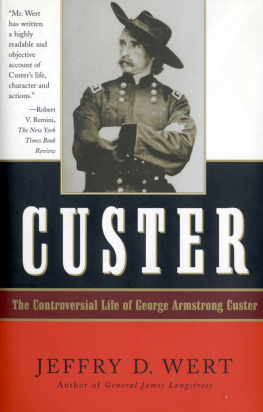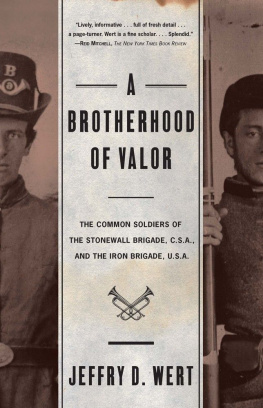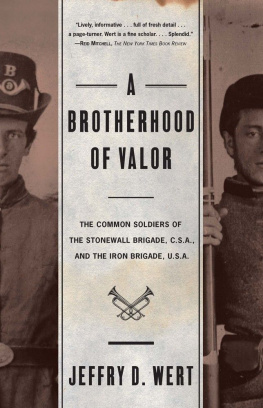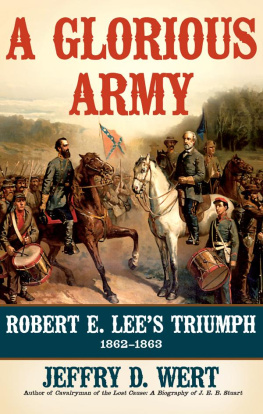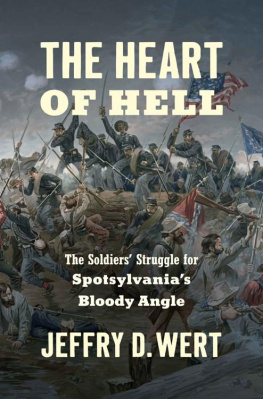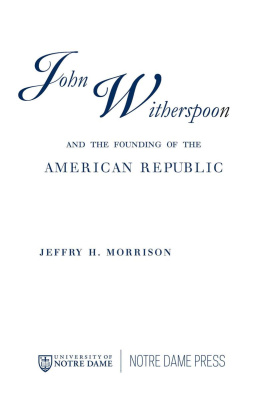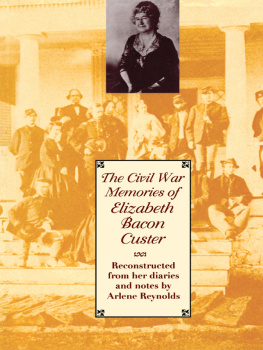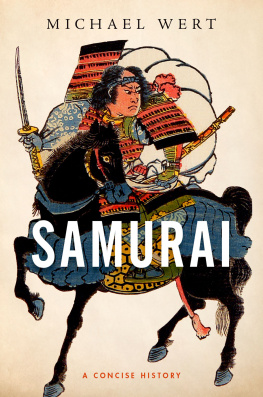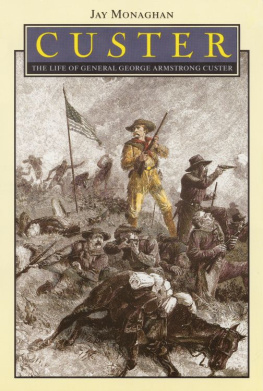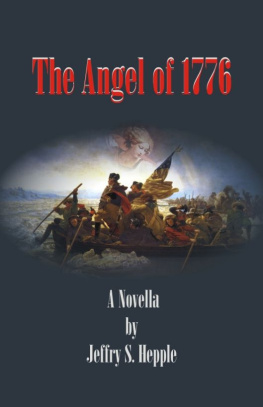Jeffry D. Wert - Custer
Here you can read online Jeffry D. Wert - Custer full text of the book (entire story) in english for free. Download pdf and epub, get meaning, cover and reviews about this ebook. genre: Non-fiction. Description of the work, (preface) as well as reviews are available. Best literature library LitArk.com created for fans of good reading and offers a wide selection of genres:
Romance novel
Science fiction
Adventure
Detective
Science
History
Home and family
Prose
Art
Politics
Computer
Non-fiction
Religion
Business
Children
Humor
Choose a favorite category and find really read worthwhile books. Enjoy immersion in the world of imagination, feel the emotions of the characters or learn something new for yourself, make an fascinating discovery.

- Book:Custer
- Author:
- Genre:
- Rating:4 / 5
- Favourites:Add to favourites
- Your mark:
- 80
- 1
- 2
- 3
- 4
- 5
Custer: summary, description and annotation
We offer to read an annotation, description, summary or preface (depends on what the author of the book "Custer" wrote himself). If you haven't found the necessary information about the book — write in the comments, we will try to find it.
Custer — read online for free the complete book (whole text) full work
Below is the text of the book, divided by pages. System saving the place of the last page read, allows you to conveniently read the book "Custer" online for free, without having to search again every time where you left off. Put a bookmark, and you can go to the page where you finished reading at any time.
Font size:
Interval:
Bookmark:

To our parents:
Merle and Kathleen Wert
Ralph and Ethel Long
George Armstrong Custer has been the subject of more books and articles than any American except Abraham Lincoln. More has been written about the Battle of Little Big Horn than about the Battle of Gettysburg. His mythic Last Stand remains one of the nations alluring enigmas. He is a rare figure in the countrys past, an individual assured of immortality. He is as fascinating as he is controversial.
Justification for another book about Custer seemingly strains credulity. My biography, however, is the first full-scale study of his entire life in over three decades. Its purpose is to present a fresh reexamination of his life based upon recent scholarship and archival research. While many biographers or historians have chosen to concentrate either on the Civil War years or the postwar decade, my work embraces both periods. Understanding of the man and of the soldier requires inclusiveness. He strides across both eras, and both eras help to define him.
Any written work such as this requires collective effort. For those individuals who offered their assistance, I extend my sincere appreciation and gratitude. Their knowledge and insight have made this a better book, but all errors are solely the responsibility of the author.
First of all, I wish to thank the archivists and librarians at the institutions cited in the bibliography for their understanding, expertise, and patience with my requests for materials.
Other individuals deserve my particular recognition:
Michael Musick, archivist, National Archives; Dr. Richard Sommers and David Keogh, archivists, and Michael Winey, photograph curator, United States Army Military Institute; Kitty Deernose, curator, Little Big Horn Battlefield National Monument; Ted Alexander and Paul Chiles, historians, Antietam National Battlefield; Karl Katafiasz, special collections librarian, Monroe County Library System; and the Licensed Guides, Gettysburg National Battlefield, for supplying me with important manuscripts and guiding my research.
Marshall Krolick, an expert on cavalry operations at Gettysburg, for sharing with me material from his collection.
Todd Kern, historian on operations in the Shenandoah Valley, for walking the ground with me at Lockes Ford and arranging an interview with members of the Locke family.
Clark B. Bud Hall, an authority on Civil War cavalry operations, for reading several of my chapters and sharing material with me.
Tom and Alice ONeil, Custer scholars, for reading the entire manuscript, offering perceptive comments, and correcting errors, above and beyond the call of duty.
Brian Pohanka, Civil War and Custer historian and author, for reading my chapters on Little Big Horn, answering questions, and sharing material from his collection.
Allan Tischler, longtime friend and fellow Civil War historian, for reading chapters on the Shenandoah Valley campaign, walking the ground with me at Toms Brook, finding numerous sources, and for his friendship.
Nick, Sr.; Kathy; and Nick Picerno, Jr., dear family friends, for their generosity in sharing their home with us for research visits, for escorting me around Vermont and New Hampshire, and for their support and kindness.
Robert Gottlieb, my agent, for the idea and the counsel.
Bob Bender, my editor, for his endless patience, understanding, and commitment.
Jason and Natalie, our son and daughter, for their love, the richest of lifes gifts.
Gloria, my wife, for sharing with me the work of this book, from beginning to end, for her love, and for giving meaning and fulfillment to my life.
Merle and Kathleen Wert, my parents, and Ralph and Ethel Long, Glorias parents, for their encouragement, support, and love, and to whom this book is dedicated.
Jeffry D. Wert
Centre Hall, Pennsylvania
July 14, 1995
It was a Sabbath dayand men waited. Despite the sound of artillery fire and musketry, many of them believed that the long road of civil war could go no farther. For four years, a divided nation sought such a time and place, and now on April 9, 1865, Palm Sunday, near Appomattox Court House, Virginia, the stillness appeared to be at hand.
Although anticipated for months, this final collision had come swiftly during the past week. On April 2, the Union Army of the Potomac, under the direction of Lieutenant General Ulysses S. Grant, overwhelmed the enemy lines around Petersburg, Virginia, and seized the vital railroad center. For ten months, the Confederate entrenchments and General Robert E. Lees Army of Northern Virginia had defied the Federals. But desertion and death had reduced Lees ranks to a shadow, and when the Northerners rolled forward, the Southern veterans stood one last time long enough for Lee to extricate his units. Into the night Lee marched the remnants, guiding them westward. Behind the Confederates, their capital, Richmond, roughly twenty miles north of Petersburg, surrendered the next day.
The Federals pursued, relentlessly, sensing that Petersburg had been a mortal wound. It became a race that Lees men had to win, but could not. In the forefront of Grants army rode the cavalry. The Union horsemen gnawed at the edges and ripped apart the fleeing columns. Our cavalry were untiring, remembered a general, and the Rebels no longer could match them. Finally, on the evening of April 8, the Third Cavalry Division knifed into the van of Lees army and barred its path.
The cavalrymen of the Third Division belonged to twenty-five-year-old Brevet Major General George Armstrong Custer. He had been their commander since the previous autumn, and under his leadership, the troopers had become one of the finest combat units in the army. Personally fearless, Custer had instilled an aggressiveness in his veterans that often had placed them in the forefront. Once again, they had paced the army, bringing them here to a Virginia crossroads, perhaps only a day from victory.
At daylight on April 9, Confederate infantry, supported by artillery, advanced against the Yankees. Proud, defiant, the once seemingly invincible Rebels came on for a final time. Federal units who had reached the front during the night opened fire, while Custer hurried his brigades forward. Behind Custer, troopers carried a cluster of captured Confederate battle flags, a dramatic gesture typical of the general. His men repulsed an enemy sortie and prepared to charge.
From a ridge, George Custer watched as his regiments wheeled into formation. For the renowned Boy General of the Union army, he was where he wanted to be, where he had dreamed of being since he had been a youth. He had been in the debacle at First Bull Run in 1861, and now, he would be in at the end. At one time, he was the youngest general in the army, and his name became a household word in the North. He attained a combat record as a cavalry officer nearly unmatched, while the fame he enjoyed was reserved for few others in the army.
For Custer, however, there was no acclaim without controversy. Even on this day of Union victory, his brashness and flair would generate eventual disagreement. With him, there seemed to be no middle ground. While his men were devoted to him and his superiors praised him, fellow officers resentedperhaps enviedhis fame, his showmanship, his loudly proclaimed luck. He was a soldier encased in an image; a man shaped by his times, when the country redefined itself and concluded a continental mission.
George Custer moved within that era, defined by it, and in part, defining it. Because of that he remains a disturbing and controversial presence within American history. In life, he fascinated a nation; in death, he haunted its soul. If his military career had ended on the ridge near Appomattox Court House, he would be remembered as one of the countrys finest horse soldiers, a warrior hero, standing at ease, in a front rank of fellow soldiers. But his passage would come instead on a ridge above a Montana river on another Sabbath day when men also waited.
Font size:
Interval:
Bookmark:
Similar books «Custer»
Look at similar books to Custer. We have selected literature similar in name and meaning in the hope of providing readers with more options to find new, interesting, not yet read works.
Discussion, reviews of the book Custer and just readers' own opinions. Leave your comments, write what you think about the work, its meaning or the main characters. Specify what exactly you liked and what you didn't like, and why you think so.

